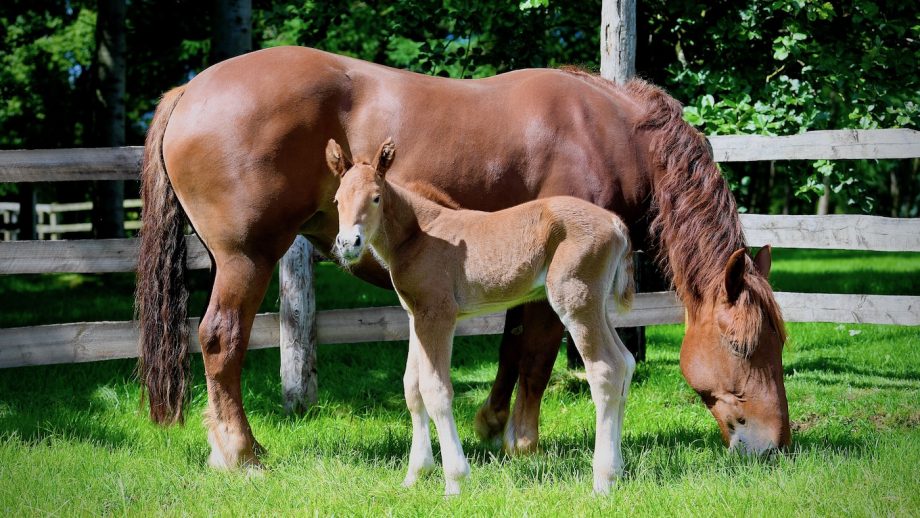[ad_1]
Cloning horses is no longer the alien concept it once was. While still being far from being commonplace, this technology has developed beyond recognition over the past two decades, with cloning and cloned bloodlines now more accessible than ever to British breeders, and playing an important role in genetic preservation.
What is a clone?
A clone horse is a genetically identical replica of another horse, with no programmed changes to their DNA. The pair are genetic twins, but born at different times.
Horses are typically cloned in order to preserve their valuable bloodlines, often in cases where a superior or highly valuable horse has died or been gelded and therefore is unable to produce offspring. The science is also increasingly being used for the genetic preservation of rare and endangered breeds.
Is cloning horses legal?
Yes, although the rules around it vary between equestrian industries and studbooks. While cloning is prohibited in the thoroughbred industry, since 2012 the FEI has allowed the participation of clones and their progenies in equestrian sport.
How does cloning actually work?
Cloning horses involves a tissue sample being taken from the horse and the DNA-containing nucleus of a cell transferred into a recipient egg, or oocyte, which has had the DNA removed. This egg is then implanted into a recipient mare to be carried to term.
How much does cloning a horse cost?
The first step in the cloning process is preserving the cells, which costs £500+VAT via British company Gemini Genetics, along with a storage fee of £12 per month until you are ready to proceed with the process. The next stage, in which the cells are cultured, costs around £1,200 with Gemini Genetics.
When it comes to the actual cloning procedure, the cost is much more. It varies per species, but expect to pay in the region of $85,000 to clone a horse with leading USA-based cloning company ViaGen.
Is it possible to clone a horse that has died?
Yes, but you have to move fast – time is of the essence in a post-mortem situation. Tissue samples must be taken by a vet after a horse has died and Gemini Genetics states that the maximum length of time it can accept the biopsy samples is five days post mortem, as long as the animal has been kept in optimal conditions during this time (approximately 4 degrees). The chances of successful preservation decreases with every day the horse has been deceased.
Which famous horses have been cloned so far?
There are now several examples of top horses who have been cloned. The double Olympic silver medal-winning showjumper Gem Twist (Good Twist x Noble Jay) has two clones on the ground: Gemini CL, now 15, is currently standing in Europe and the sire of several progeny already out on the showjumping circuit, while 12-year-old Murka’s Gem stands at Stallion AI Services in Shropshire.
The top Olympic eventing stallion Chilli Morning has three six-year-old clones on the ground, known as Deuce, Trey and Quattro and officially registered as Chilli Morning II, III and IV. Chilli Morning IV (Quattro) is in training with Gemma Stevens (née Tattersall), and has finished fourth and 11th in his first two BE100s, with a double clear on both occasions. Gemma, who started all three clones, is now aiming Quattro at the 2023 young horse World Championships at Le Lion d’Angers.
Chilli Morning III (Trey) went to Cheshire-based Chinese rider Alex Hua Tian and Deuce to German Olympic champion Julia Krajewski.
The famous Irish stallion Cruising has also been cloned; Cruising Arish and Cruising Encore were born in 2012. Both now stand at Hartwell Stud, with several offspring on the ground between them. Cruising Encore has jumped up to 1.40m with Irish rider Edward Doyle, while Arish has reached 1.30m level and is ridden by Ireland’s Feaha Moore.
A clone of Nick Skelton’s prolific showjumping partner Arko III was also born in 2021, seven months following the death of Arko himself.
Do clones look exactly like the original horse?
Although clones are genetic replicas, they do not tend to look identical to the original horse. The most obvious difference is often a variation in markings. White markings are not driven by genetics, but due to random migration of white cells during foetal development. This means that the shape and positioning of white markings is likely to differ between the original horse and its clones.
Are clones’ personalities the same as the original horse?
Horses’ personalities are influenced by their environment as much as their genetics, meaning the personalities of clones can vary compared to that of the original horse. According to the team at ViaGen, though, clients always report that their clones remind them of the original animal’s personality, even if they are not exactly alike.
Is it possible to clone a clone?
Yes it is possible – a clone is a normal animal, so the procedure is the same – and to date several clones have been produced from other clones, usually in cases where people wish to continue just one line.
Can I clone my dog (or cat)?
Yes – ViaGen works with cloning pets (dogs and cats) as well as horses. The process is broadly the same, although the costs differ – expect to pay in the region of $50,000 to clone a dog with ViaGen, in addition to the costs involved for cell preservation and storage via Gemini Genetics.
You might also be interested in:

Credit: David Miller

Credit: Horsepower Creative/Stallion AI Services, Cogent UK and Twemlows Stud

Credit: Alamy Stock Photo

Credit: Future
Horse & Hound magazine, out every Thursday, is packed with all the latest news and reports, as well as interviews, specials, nostalgia, vet and training advice. Find how you can enjoy the magazine delivered to your door every week, plus options to upgrade your subscription to access our online service that brings you breaking news and reports as well as other benefits.
[ad_2]
Source by [author_name]



